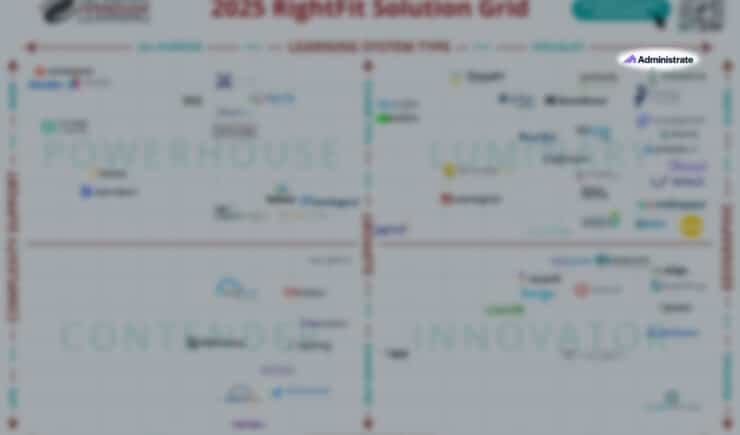The (Business) Key to Surviving Coronavirus
Thankfully, it appears that many areas of the world are beginning to turn a corner when it comes to the global challenge of COVID-19. For business, hope is dawning as well, but the game has changed. The virus has deeply impacted the way we work and do business. Many factors relate, but a crucial, common thread is emerging among companies that found ways to survive, or even thrive, during the coronavirus crisis: organizational resilience.
Leaders across industries are now, wisely, evaluating how and where they can construct or fortify mission-saving resilience into their operations, and training, as for every growth initiative in business, is at the epicenter of this discussion.
Is your learning technology resilient?
When business as usual shifted nearly overnight due to COVID-19, organizations had to pivot overnight as well. For training teams, this meant the rapid transposition of vital classroom instruction to vILT via Zoom or Teams classrooms. It increased the importance of asynchronous communication. It tasked learning and development with an even heavier role in maintaining a culture of corporate community.
Admirably, the resilience in many businesses during 2020 was found in the staff of the training organization. But, while teams pushed through and made incredible impact in an unprecedented situation, many achieved this despite their learning technology rather than because of it.
On average, the learning tech stack for most organizations includes anywhere from 10 to 12 different, mostly disconnected platforms or software tools.
That’s a complex set of systems to manage and support, and a lot of structural pathways to build between functions, tech, learners, and processes – pathways your learning and development team may be manually facilitating. That’s a lot to buy. That’s a lot to scale, when the time comes. That’s a lot of data to aggregate and analyze by hand. That’s not a sustainable infrastructure. That’s not a model for organizational resilience.
As we begin to apply what we’ve learned from business during the pandemic, it’s time for training to examine its tech stack through the lens of resilience.
It’s time to reclaim your learning technology infrastructure.
What does a good learning tech infrastructure look like?
Here, we’re thinking about infrastructure in the traditional sense of the word, and applying it to software to create a new class of learning technology: a training management system.
Infrastructure is always there and is seamlessly integrated with other critical systems to create an experience that’s trusted, scalable, and resilient. You don’t worry about whether or not your light switch will work, if you can get water from the tap, or if you can use the highway to get home for the holidays. If you hit a pothole, a light bulb goes out, or the water won’t get hot, then you grumble, but the infrastructure is still there. The issue is just with the point solutions within the infrastructure.
Training management software supports training teams in building a dynamic interface for 100% of training operations, so your team can both define and support the interconnections between software and the training of learners.
If you took ownership of your learning technology infrastructure – with this context of interconnectivity between learners and software in mind – what should it look like? Let’s take a look at three critical attributes first, then discuss how to get there.
1. The Ability to Scale
Life is defined by change and growth. If learning tech lacks the ability to scale with your business, how is it that your business will be able to scale when change happens? This isn’t something that is often top of mind when buying software, but it ought to be. Beyond considering the cost and term of the contract, don’t forget to factor agility into your software purchase. As we’ve seen, things can change rapidly; the question is: can you?
Qualities of Agile Tech:
- Configurability: Can the tool be customized or modified to fit the unique needs of your organization, or are you going to have to modify your training staff or processes to accommodate the tool? Your business should come first.
- Adaptability: Is there room for growth if your needs change? If you’re starting your use at the maximum capability of the tool, you have nowhere to grow. You may have identified a solution for today, but you’ve also set a limit on tomorrow. Seek tools that can adapt as your organization encounters new and unique challenges.
2. The Ability to Connect
Learning happens best when training outcomes can be directly connected to your unique organizational objectives. If our learning technology doesn’t foster alignment to other key business systems, it is presenting us with a problem, not a solution. This is about more than just capturing insights into the learning activity itself; it’s also paramount to show how learner activity can impact bottom-line business objectives by ensuring systems facilitate efficient communication between business functions. Maintaining connection and communication between training and other key business functions allows the great community of your organization to operate on an entirely new level.
Qualities of Connected Tech:
- System Integrations: Whether ready-to-use for common HR or Finance platforms, or customizable integrations via open API, rely on technology that is able to be woven together with other crucial business systems so that the impact of your training can be seen and felt by the bottom line, automatically.
- Single System of Record for Training Data: Gathering, let alone utilizing, data from 10 to 12 disparate systems is going to generate more work than insight. Constructing your technology environment to share a common data source will revolutionize your ability to learn from your outcomes and drive the success of your business
3. The Ability to Tell Stories
Infrastructure facilitates the speed and scale at which LIFE happens, and training is where the life of the organization is adapting, becoming, and changing. The ability to tell those stories of impact and transformation is crucial for any organization to understand and leverage the true pulse of its potential as well as its current power to succeed.
Qualities of Story-Telling Tech:
- Reportable Data: This sounds obvious, but how many times have you wished for a certain report out of a system, but it wasn’t available, or you had to pay extra for a help desk to create it for you? It’s YOUR data. It should be reportable. TO YOU.
- Meaningful Reporting: If your technology is just going to provide you with activity numbers, you have a lot of work to do to extrapolate the value of that activity to actual business impact. Technology can do more for you, however. Choosing a platform approach that includes a nimble, no-code reporting engine you can configure to your KPIs, compliance, and business requirements will position your team for success. There is Learning Analytics in your environment, but you have to capture it in meaningful contexts.
How to Take Back Your Learning Tech Infrastructure
As a producer of learning tech software, we’d like to let you in on a little secret: you don’t have to accept software limitations anymore. Ten years ago, sure. Even five years ago, maybe. That’s just where training technology was at the time. Single problem to single solution ratio. That is no longer the case.
If you didn’t get the memo, please hear this: your systems are as limited and disconnected as you choose for them to be. The integration capabilities of open API, the invaluable efficiency and insight of artificial intelligence capabilities, and so many other recent tech shifts collectively mean that now – today – technology can configure to your business instead of your business modifying processes, workflows, and staffing to appease the care and feeding of vital learning tech tools.
This is a huge shift for training. And, it’s a shift every training team can begin to make now.
Enterprise training will always be complex, but it no longer has to be technologically difficult to sustain. Resilience starts with adopting a learning tech infrastructure for digital transformation in enterprise training, and applying that transformation and perspective to how you build and maintain your learning tech stack. Demand healthy infrastructure attributes of your tech solutions – scalability, connectivity, and story-telling capacity – and you’ll begin to find the agility you need to adapt and carry your business forward, no matter what’s ahead.
How do we know about learning tech ecosystems? We are one.
Administrate, simply stated, is an infrastructure for digital transformation in enterprise training. This type of tool didn’t exist before, so we built it. Yes, there are other training management solutions out there that “compete” with us, but not really. It isn’t an apples-to-apples situation. None of them (feel free to check us on this) can tick all of those attributes above. Administrate does.
If you’re seeking to boost resilience as an organization and training is playing a key role in that, you’re welcome to consider us as a conversation resource for that process. Reach out anytime.
In the meantime, we’re wishing you the best as you build your resilience and success past the pandemic. Taking back your learning tech infrastructure is a great place to start. We’re here to help.





